Top 10 React Native Component Libraries in 2025
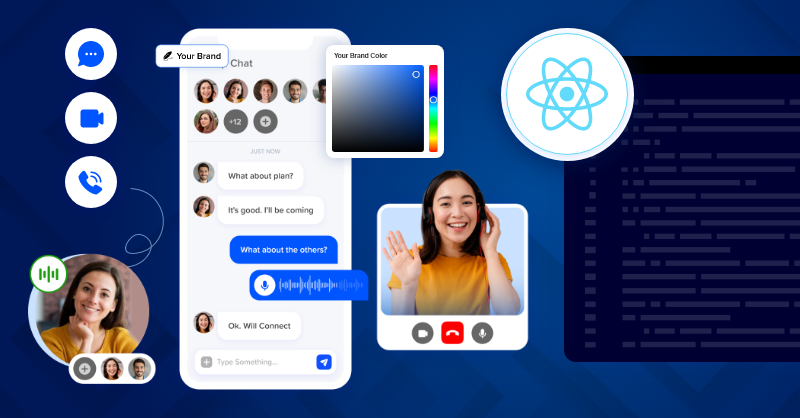
Editor’s Note: React Native is a much sought-after framework for app development and before reading this blog, we suggest you look at the first part of our React Native vs Flutter trilogy, which details its basics.
One of the popular frameworks that’s winning the hearts of many mobile app developers these days is React Native. As with a single code base, they can deploy apps on iOS and Android without having to spend hefty time on different development environments.
Doesn’t it sound interesting? Undoubtedly yes, hence in the article below, we will see the different React Native component libraries that will speed up the development process and boost up the overall look of the app with their customizable and pre-built UI components.
Plus, we will also see how these component libraries will help developers to offer a polished user experience. As always, with the basics.
Table of Contents
What is React Native?
React Native comes as an open-source framework developed by Facebook to build reliable and highly potent cross-platform mobile applications. This framework uses Javascript and React programming languages to build iOS and Android apps using the same codebase.
Plus, with vast features like declarative UI components, hot reloading, and libraries, React Native has come as a prime choice for developers to build native apps.
What Does The React Native Component Library Mean?
A React Native component library is a repository of pre-built components and libraries to help mobile app developers build native apps.
A library will usually have customizable components like calendars, maps, buttons, forms, navigation, and much more that can be integrated into any React Native app.
And a React Native component library will include UI components, animation components, navigation components, social media integration elements, and other functionalities that can be used to build calendar apps, chat apps, and maps.
This way, developers can save a lot of time and effort by building each feature from the very scratch.
Additionally, the best part of it is that these component libraries are provided by many third-party companies or open-source communities, so its download will not be a problem.

React Native Chat API in Less than 48 Hours?
- Complete Source Code
- Lifetime Data Ownership
- Deploy on Own Server
What are the Benefits of a React Native Component Libraries?
Here’s a list of benefits of using component libraries in React Native apps that can help to launch a super-fast and functional app.
1. Community Help: Usually frameworks like React Native will have a larger and more active developer community that aids developers in their development by offering resources or troubleshooting errors.
2. High Performance: With libraries, developers can improve the application’s response time and speed.
3. Quick Maintenance: As codes are pre-built, launching a function may not be difficult and it’s easier to fix any issue that comes along the way.
4. Better Quality: All the libraries are well-tested for bugs and other issues before launching them to the market. Hence the quality of the app being developed will not be hampered.
5. Faster Development: Making use of component libraries means codes already written and compiled thus helping developers to not write any functional codes from scratch.
We saw the merits of using a framework’s library. Does it have pitfalls too? We will see it in the article below.
What are the Disadvantages of Using React Native Libraries?
Here’s a list of pitfalls of using its component library:
1. Slower Downloads: As including a library in your application can increase its size and take more storage, users may feel longer download times.
2. Conflicts b/w Libraries: Adding a new library to an application can cause conflict with other libraries
3. Security Issues: In case a library is not well-maintained, it can pose security risks to the app.
4. Very Few Customizations: A library has a specific function, hence not all your app’s requirements can be met up by the library thus limiting its customization.
Hence, the only way to overcome its disadvantages is to check out for security risks and choose a requirement-compatible library.
Now, we will focus on the top list of React Native libraries.
10 Best React Native UI Component Libraries in 2025
Unveil our curated list of React Native libraries that many developers seek to build highly reliable mobile apps.
We have explained in detail about every library’s features so that it may help you in your next project development.
1. MirrorFly React Native SDK
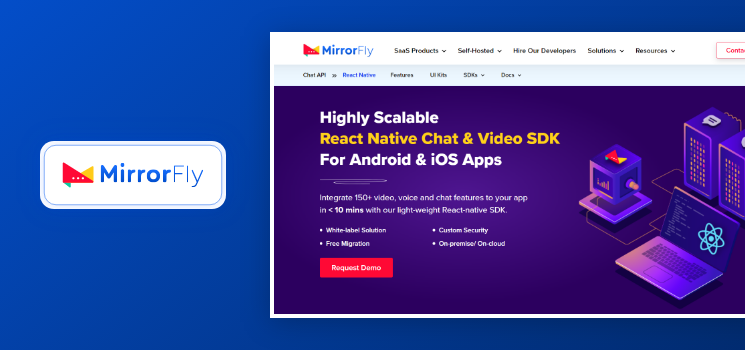
MirrorFly’s React Native SDK helps developers add video, voice, and chat capabilities into React Native applications. To do so, developers must first get the token, add the required dependencies, and configure the SDK.
Plus, MirrorFly’s SDKs lead the market ahead with two of the best models, SaaS and Self-hosted solution (SaaP) that provide developers with a budget-friendly monthly subscription and 100% customizations on all features at a one-time license fee.
Its Major Highlights:
- MirrorFly React Native SDKs offer 100% customizations on 150+ call and chat features along with 100+ UI components.
- Its SDKs are known for limitless scalability and reduced latency even during unstable network connectivity.
- MirrorFly also comes as HIPAA and GDPR compliant with strong E2E and AES encryption mechanisms to build a secure in-app chat infrastructure.
- With its SDKs, you can easily integrate all features in less than 20 minutes.
- MirrorFly’s multi-platform SDK gives complete ownership of codes.
2. React Native Elements
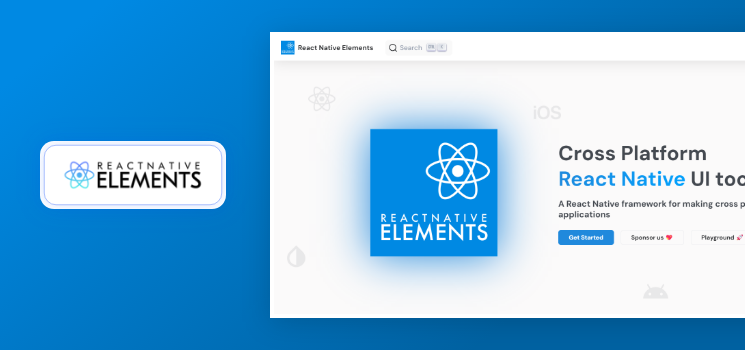
By offering exclusive out-of-the-box UI components like buttons, cards, icons, and other input fields, the React Native Elements library helps developers quickly build applications.
Its Major Highlights:
- Element Library works on both iOS and Android platforms thus giving out a consistent look on both.
- With its “theme support” feature, developers can change the look and feel of the mobile app.
- And to customize the style and look, it holds the majority of prebuilt UI components.
- Elements are maintained well by a group of tech experts who contribute to its future developments and aid fellow developers in fixing issues.
3. React Navigation
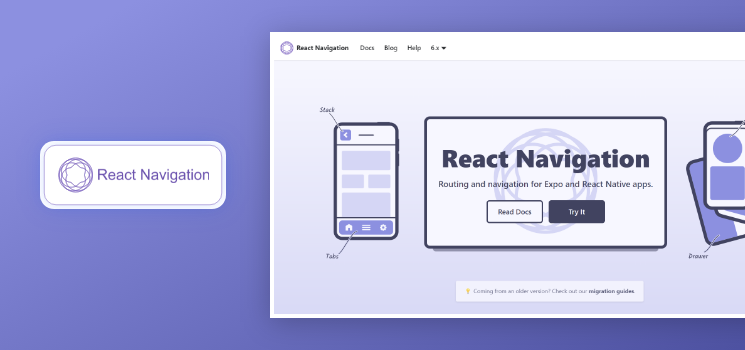
To provide navigation options to mobile apps, the React Navigation library is used by developers all around.
Upon adding this library, one can access different navigation types like stack, tab, and drawer navigation, and add different UI components into apps like headers, buttons, and menus.
Its Major Highlights:
- React Navigation can be used to create apps that are compatible with iOS and Android platforms.
- It can be easily integrated with other libraries to build React Native applications.
- Navigation uses a declarative programming approach and offers complete customization.
4. Axios
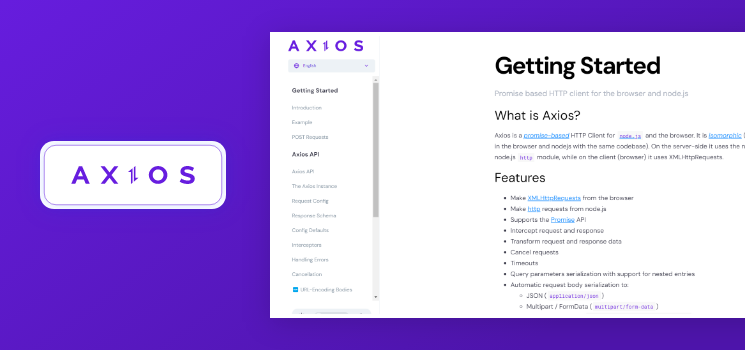
If you want to make HTTP requests from web and mobile applications, then Axios stands as a popular library.
Additionally in React Native, it is used to interact with Web APIs to collect data from servers and handle HTTP requests and responses.
Its Major Highlights:
- Axios’s library is compatible with web and mobile platforms and its Promise API handles all async HTTP requests
- Axios helps boost network performance by canceling HTTP requests before they are completed.
- Besides an active developer community to look after development issues, it aids in editing HTTP requests and responses.
- Axios is primarily into authentication tokens and error handling.
5. Redux
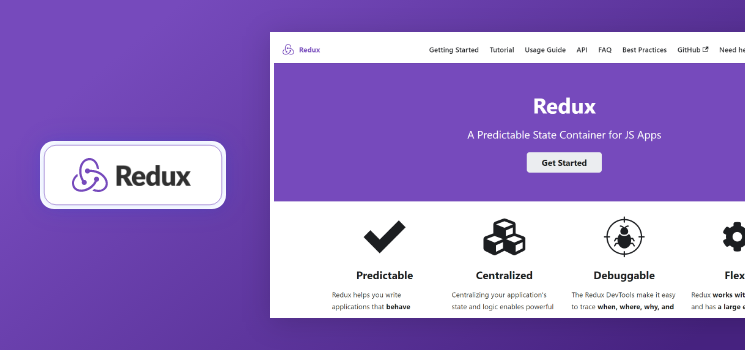
It stands as one of the eminent libraries that is used to connect React and React Native for managing the state of applications like debugging, testing, and scaling.
Plus this component library is used to build complex apps that require a lot of interactions or conversations.
Its Major Highlights:
- With Redux, codes can be shared between React and React Native web and mobile applications.
- It has active community support with a debugger to debug complex issues.
- Upon using Redux, developers can predict any sudden changes to the application.
- And it provides a centralized store to manage the entire application.
6. React Native Image Picker
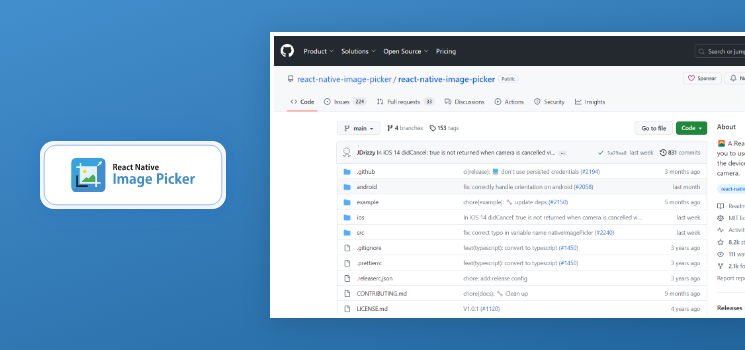
This particular React Native library comes as an efficient way to either capture new photos or search for the images from the device’s camera. Its use cases can be in building social media apps and e-commerce apps.
Its Major Highlights:
- Image Picker has an API that on integrating into mobile apps can be used to select and capture images
- It can be used on both Android and iOS platforms and can be made to easily share logic and codes
- Image Picker offers customization options like determining the quality of the image, its size, clarity, and other parameters.
- Besides having a large development community support, it also offers 3rd-party integrations to image manipulation and upload libraries.
7. React Native Debugger
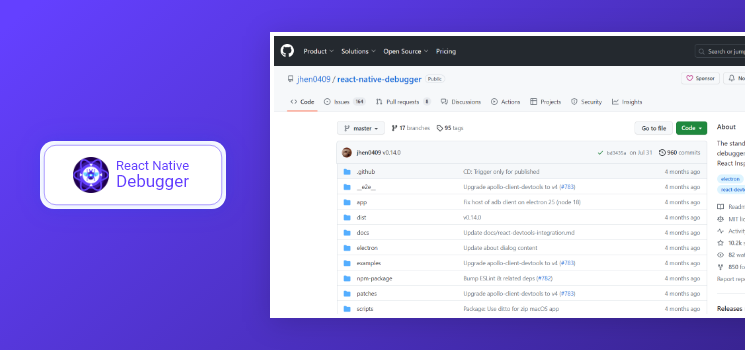
Using the Chrome Developer Tools Interface, this library helps developers debug React Native applications. It is a desktop app that offers tools like network debugging, redux debugging, and performance profiling.
Its Major Highlights:
- The debugger library component helps developers to inspect API-related issues and responses.
- It also helps in identifying and fixing performance issues by looking out app’s profile
- The debugger can be integrated with VS code to add a text editor to the application.
- This library is also into providing redux dev tools to debug redux store in real-time.
- Since it is maintained by a team of developers, their community can help with any support or issues.
8. Vector Icons
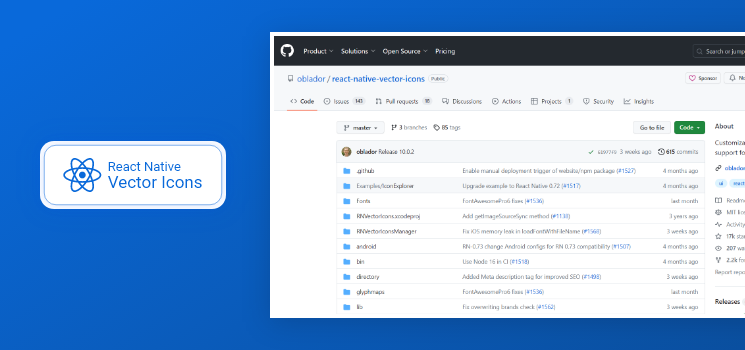
It is one of the major and well-known libraries of React Native that offers a set of customizable vector icons for mobile applications. It may include icons for buttons, navigations, and other UI-related elements.
Its Major Highlights:
- React Native’s vector icons are compatible with iOS and Android platforms.
- It offers customization options to change the style, color, and size of the app.
- It also includes icons for social media integration and can be integrated with React Native elements.
- There is a huge development and community support for vector icons.
Related Article: A Guide to Build a Chat App with react-native-gifted-chat
9. React Native Map
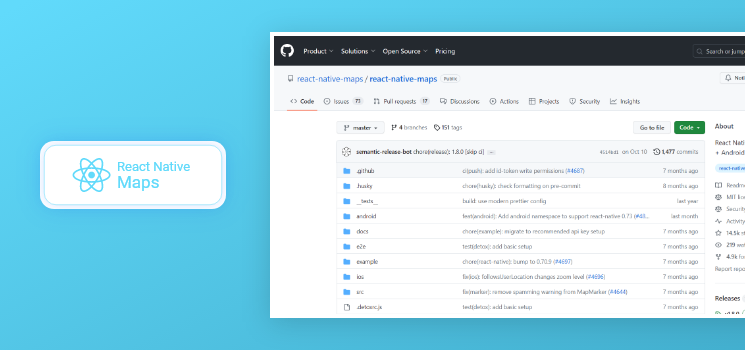
Want to integrate maps and other location-based services into your React Native mobile apps? Then, Map is your go-to library that is often integrated to add location-based features to riding apps, travel apps, and even weather apps.
Its Major Highlights:
- React Native Map comes as a compatible code that can be shared between iOS and Android platforms.
- It renders customization options to change the look of the map, overlays, and other parameters.
- This particular library can be integrated with other third-party libraries such as geocoding services.
- It is maintained by a large group of contributors that assists developers in case of any support or issues.
10. React Native Camera
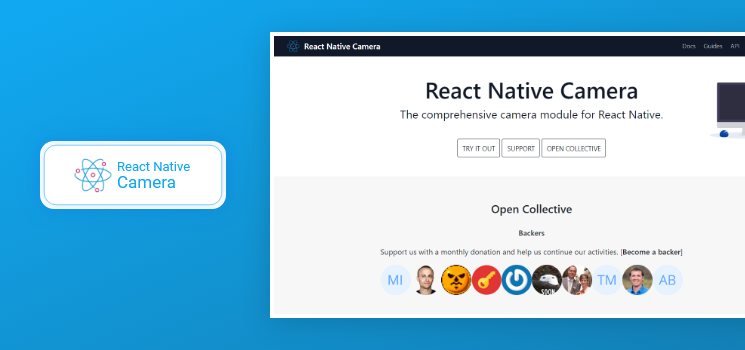
As going with the name, this library provides an interface to capture photos and videos for React Native apps by accessing the device’s camera.
Some of the applications where this library works include e-commerce apps, chat apps, video calling apps, and photo editing apps.
Its Major Highlights:
- It comes as a cross-platform code-compatible library between iOS and Android that allows easy sharing of codes between the two platforms.
- This library allows developers to customize features like the size of the image or video, the quality of images, and the type of media.
- The camera also offers pre-built support for camera controls like zoom in and out, focus, and flash.
It can be integrated with third-party libraries like image manipulation library or image upload library and has a large community support.
Wrapping Up!
Finally, we saw some of the React Native component libraries that would help developers by providing them with a suite of customizable and pre-made components to build any communication app.
By adopting this tech, developers can save time and effort to build an application from scratch. Speaking of building an app from scratch, we have a blog that explains the benefits of using an API for integrating in-app messaging capabilities. Do take a look at it.
And, if you are interested in using React Native SDKs for adding video or chat functionalities, talk to our experts about MirrorFly React Native SDKs.
MirrorFly makes it easy & quick! Add up to 1000+ in-app Messaging features for Android, iOS or Web apps.
Contact Sales200+ Happy Clients
Topic-based Chat
Multi-tenancy Support
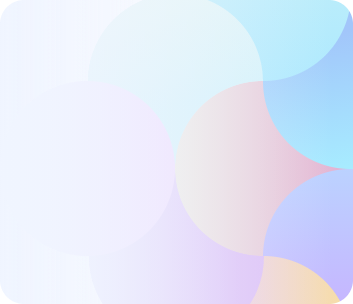
Related Articles
- Top 7 React Native Chat APIs And SDK Providers In 2025
- How to Build a React Native Chat App – A Complete Tutorial
- How To Build A React Native Video Chat App in 2025
- Simple Steps To Create a React JS Video Chat App
- React Component Libraries For Cross-platform App Development
Very nice article, You covered the list of User Interface component libraries. I would like to thank you for the efforts you have made in writing this article.
Great Article! Thanks for the sharing I am also looking best Top React Native UI Component libraries. This article realy helped me lot and time saver.
This is an amazing comparison article about React Native Libraries. It help me lot to choose the best Native Base: Universal Components for React & React Native.
Thanks. I found a some good ideas in your article and choosing the top React Native UI libraries and components.
Great post. Your writing is so clear and helpful. I like the suggestions you made in the react native component libraries comparison.
I think very detailed article for those who check react native libraries. I like how you have researched and presented these exact points so clearly. Please keep sharing more!